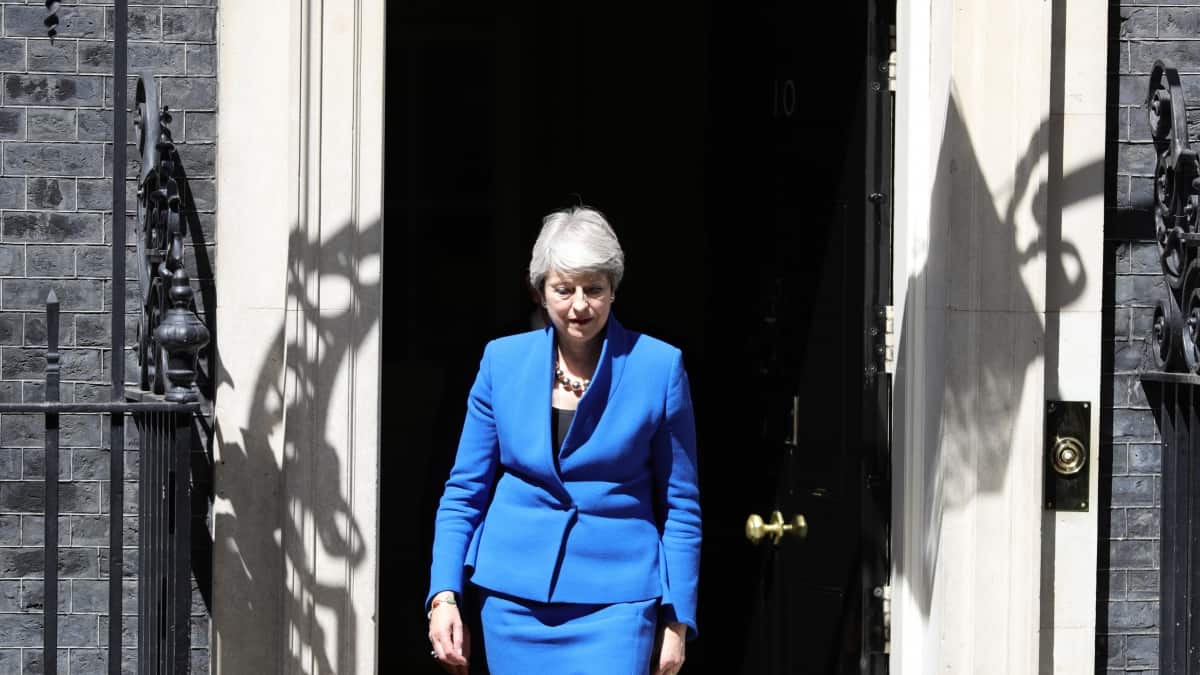
As Boris Johnson makes himself comfortable in Number 10 Downing Street – for how long, remains to be seen – how will history judge Theresa May’s legacy?
Theresa May leaves Downing Street as one of the shortest-serving prime ministers for more than 100 years.
Her premiership has lasted a total of 1,106 days – slightly ahead of fellow Conservative PM Neville Chamberlain and, defying calls for her resignations, managing to outlast Gordon Brown.
By chance or design, Mrs May’s 1,106 days as prime minister is slightly longer than the number of days – 1,016 – from her resignation to the latest possible date for the next general election, on May 5 2022.
Of course Boris Johnson may well end up barely lasting much more than the 100 days he has promised to deliver Brexit in as things may go awry with parliament intent on not allowing Johnson to unleash the havoc of a no-deal Brexit on the country on October 31 2019.
Boris Johnson has ruled out the Brexit deal that his predecessor negotiated with the 27 EU member, dubbing it a “suicide vest” for the UK – bound by EU rules it would have no say over. And the EU has ruled out the changes he insists he can make to appease the ERG Brexit ultras at war with Brexit realists in his party.
This unachievable Brexit mess that has been Theresa May’s undoing – and looks set to undo the Conservative Party- is a mess of her making.
-A mess that began before May’s 1,000 days as PM, during her decade as Home Secretary.
You see, as Home Secretary from 2010 to 2016, Theresa May spearheaded the Tory scapegoating of immigrants and vowed to create a “hostile environment” that not only caused untold suffering with its institutional racism, but sowed the poison seeds that allowed anti-immigrant feeling into a debate on Britain’s national identity.
As Home Secretary, Theresa May suppressed repeatedly the government’s own findings that immigration fulfilled economic needs for the UK’s ageing demographic, and made reducing immigration to “tens of thousands” a major priority – even though it was way down the list of priorities of people suffering the consequences of Tory austerity in repeated polls.
Theresa May took it upon herself to insist that she would get asylum seeker numbers down by eroding their human rights with horrific legislation that not only failed to get numbers down, but helped create a backlog of asylum seekers living in limbo unable to work and contribute to British society.
May insisted immigration should be brought down to the “tens of thousands” – a rash promise that civil servants, Home Office staff, economists, experts, all repeatedly warned her was unachievable. – But hey, what do experts know? – They all conclude that immigration won’t reduce to tens of thousands Brexit or no Brexit.
And then when the Tory government inevitably failed each year to reduce immigration to the ridiculous target May had invented – largely because May was at the same time cutting Home Office staff drastically – May and Cameron started blaming the EU and “Freedom Of Movement” for their own failures.
“Freedom Of Movement” means Brits and EU citizens can enjoy the opportunities of working across the EU. It means Europe’s most productive could come to the UK to work, but could not stay here if they didn’t find gainful employment.
– Though of course that depended on Theresa May enforcing that with the Home Office staff she continuously depleted.
Instead, May repeatedly told the country that immigration was a problem – that even though it was her responsibility as Home Secretary to tackle – was impossible to do anything about while we were part of the EU and enjoyed “Freedom of Movement.”
So after blaming membership of the EU for a problem she and her Tory colleagues had invented, they asked the country whether people wanted to remain part of the EU.
And is it any surprise that Theresa May is the next PM to quit?
She has been consistently too cowardly to call out the lies and damage Brexit will cause the UK according to her own government’s studies which she attempted to suppress too.
And it’s her stubbornness that made the bad situation she made even worse. A stubbornness to doggedly pursue a deal both Remainers and Brexiteers see as leaving Britain a diminished rule-take not rule-maker.
A stubbornness to not point out the contradiction and ridiculousness of this, and pursue a Brexit she knows will diminish the country she was tasked with protecting.
And she knows full well the damage the Brexit she has championed will cause the country.
This extract from her speech says it all – no not her resignation speech outside Number 10, but one she gave explaining how ruinous Brexit would be to business leaders in the run up to the EU referendum in 2016:
“Given that British exports in goods and services to countries outside the EU are rising, one can hardly argue that the EU prevents this from happening. Leaving the EU, on the other hand, might make it considerably harder. First, we would have to replace 36 existing trade agreements we have with non-EU countries that cover 53 markets…
“And while we could certainly negotiate our own trade agreements, there would be no guarantee that they would be on terms as good as those we enjoy now.”
You can read that full speech here – and it’s quite a corker: If You Read One Speech By Theresa May , Make It This
The cynicism with which Tories have offered the country an undeliverable solution to a non-existent problem is breathtaking, but now they can’t deliver the nonsense they promised, they will be casualties too.